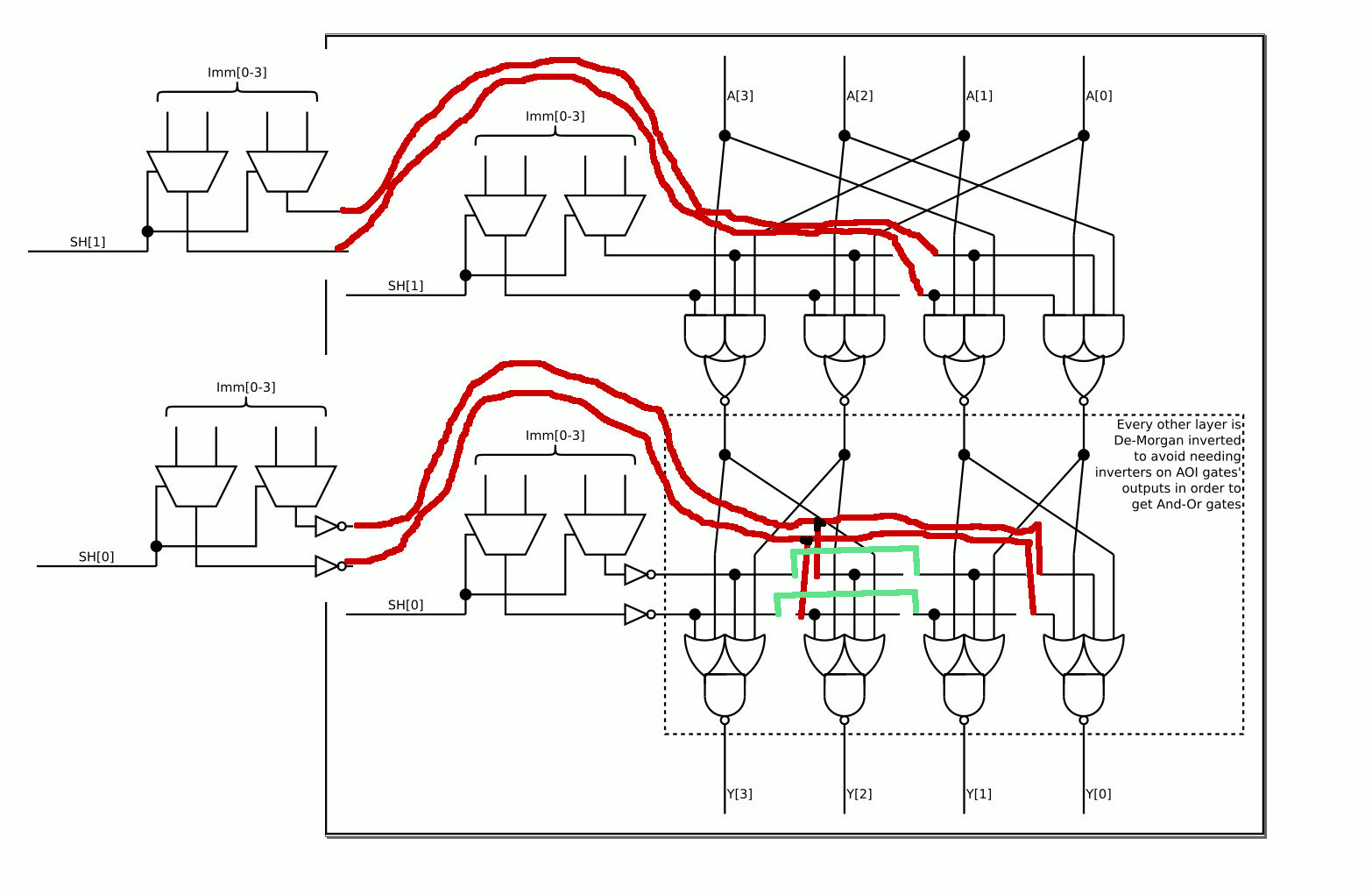# GRev/GOrC combination instruction design
The design is derived from a circuit for GRev made with muxes:
 First, we convert that circuit to use And-Or-Invert gates, since that's an efficient way the muxes can be implemented:
First, we convert that circuit to use And-Or-Invert gates, since that's an efficient way the muxes can be implemented:
 Notice how each And-Or-Invert has both a bit of `SH` and `~SH` as inputs? Those can be converted to separate inputs, controlled by the bits of `SH` using the instruction's immediate as a pair of 2-bit look-up-tables. This requires 4-bits of immediate.
This gives us our final design:
Notice how each And-Or-Invert has both a bit of `SH` and `~SH` as inputs? Those can be converted to separate inputs, controlled by the bits of `SH` using the instruction's immediate as a pair of 2-bit look-up-tables. This requires 4-bits of immediate.
This gives us our final design:
 Notice how this still has an overall circuit latency that is essentially equivalent to grev's latency (or shift/rotate's latency). Also notice how this circuit allows specifying much more than just `grev` or `gorc` instructions. Layers of XOR gates can be added at the input and output, allowing it to function as a `gandc` instruction too, requiring a total of 6-bits of immediate (1 bit for inverting the input, 1 bit for inverting the output, 4 bits for the look-up-tables).
We will also want versions of `grev` that have the shift amount be an immediate (needed for bitwise reverse and byte reversals and other similar instructions.) The immediate-shift-amount version can be specified to always do a `grev` (or maybe only `grev`/`gorc`) operation to save encoding space, since I'd guess it's much more common than any of the other immediate-shift variants.
# Twin LUT4s
gate-saving of the AND/OR (AOI) can be applied to grevlut. TODO, version
of diagram in SVG/DIA
Notice how this still has an overall circuit latency that is essentially equivalent to grev's latency (or shift/rotate's latency). Also notice how this circuit allows specifying much more than just `grev` or `gorc` instructions. Layers of XOR gates can be added at the input and output, allowing it to function as a `gandc` instruction too, requiring a total of 6-bits of immediate (1 bit for inverting the input, 1 bit for inverting the output, 4 bits for the look-up-tables).
We will also want versions of `grev` that have the shift amount be an immediate (needed for bitwise reverse and byte reversals and other similar instructions.) The immediate-shift-amount version can be specified to always do a `grev` (or maybe only `grev`/`gorc`) operation to save encoding space, since I'd guess it's much more common than any of the other immediate-shift variants.
# Twin LUT4s
gate-saving of the AND/OR (AOI) can be applied to grevlut. TODO, version
of diagram in SVG/DIA

